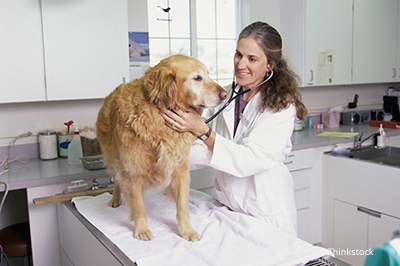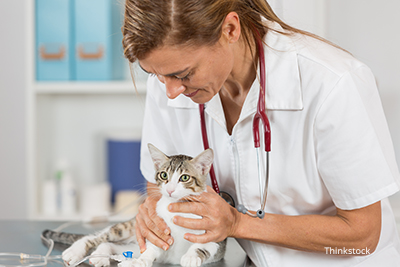Tiny Beads Cause a Revolution in Cancer Treatment in Cats
Tiny beads are changing the way some veterinarians deal with cancer. These beads are effective, cheap, and have few side effects. Are they too good to be true?
Around 2008, I came across a new option to complement cancer surgery. Results have been impressive. Until then, chemotherapy and radiation therapy were the two main solutions offered after the removal of cancerous tumors, just like in people. Both treatments may cause side effects, and they can cost thousands of dollars.
About the chemo beads
Chemo beads cost a fraction of any other option. Veterinarians are now able to place tiny cisplatin-impregnated beads around the tumor site. Cisplatin is then slowly released from the beads, which are reabsorbed by the body over 4-6 weeks. Cisplatin is a common chemo drug, normally used with an IV in our canine cancer patients.
Unfortunately, cisplatin can be deadly in cats, but by including a minuscule dose in the beads, veterinarians are now able to eliminate the former side effects.
The beads measure 3 mm in diameter or about 1 tenth of an inch.
The limitations of the chemo beads
Although cisplatin beads are often effective at preventing or slowing cancer from coming back, they do not prevent spreading (metastasis), e.g. to the lungs. Fortunately, some of these tumors do not spread readily to begin with.
When are the beads placed?
The best time to place the beads is at the time of surgery when we know exactly where the tumor was and where cancer-free edges (margins) are questionable. Implanting beads after the surgery (e.g. after the biopsy report reveals imperfect edges) has 3 drawbacks:
- It is difficult to know where margins were
- It requires another surgery under anesthesia
- There are additional costs
The number of beads varies with the size of the tumor. They are typically placed every 1-2 cm. However, to decrease the risks, 6 beads are usually the most used in cats. This means that the tumor can’t be too big if the patient is to be a good candidate.
Side-effects of chemo beads
Side-effects are rare and typically local. They occasionally include swelling, irritation, and skin drainage. Although IV cisplatin is deadly in cats, I have not observed or heard of general side effects after bead placement.
Chemo bead safety for people
Ironically, chemo drugs can cause cancer. Therefore, the pet parent should not touch any drainage with bare hands. Should the incision drain, it is important to wear disposable, single-use gloves to clean the fluid.
Licking the incision must be prevented. Cats who receive chemo beads should wear an E collar 24/7, if it was recommended, and should be separated from other pets.
FDA on chemo beads
Cisplatin beads have not been approved by the Food and Drug Administration (FDA) for use in cats. However, there are almost no FDA chemotherapy drugs that are approved for pets! Most often, what veterinarians must use are actually human drugs.
Which cancers might chemo beads be used for?
Cisplatin beads do not work on all tumors. Your veterinarian, or a veterinary surgeon, is in the best position to decide if they are appropriate. Indications for cisplatin beads include tumors removed with “thin margins” such as:
- Soft tissue sarcomas (fibrosarcoma)
- Melanoma (in the skin or the mouth)
- Some carcinomas (squamous cell carcinoma, salivary gland carcinoma, thyroid carcinoma)
I have used chemo beads in cats with a variety of cancerous tumors, including:
- Malignant melanoma of the lower eyelid
- Fibrosarcomas in the skin
- Cancerous tumors (carcinoma) in the salivary glands
My view of chemo beads
So what’s my take? The beads are keeping their promise: they are effective, they are cheaper than all other options, and they have minimal to no side effects. Remarkably, we can use beads in cats despite the fact that IV cisplatin is deadly.
From personal experience, the beads have been remarkably well-tolerated. Other surgeons who have used the cisplatin beads have been equally impressed. Still, it is a relatively new treatment that few surgeons have heard about. Hopefully, as more colleagues learn about them, more cats will benefit from them.
Next, check out: "Tiny Beads Cause a Revolution in Cancer Treatment in Dogs" >
If you have any questions or concerns, you should always visit or call your veterinarian -- they are your best resource to ensure the health and well-being of your pets.
Tiny Beads Cause a Revolution in Cancer Treatment in Dogs

New options for cancer treatments in dogs don’t exactly occur every day. Around 2008, I heard of a new option to complement cancer surgery. So far, my results using this option have been very impressive.
Until recently, my “follow-up” treatment after the removal of cancerous tumors included chemotherapy and radiation therapy, just like in people. Both options have potential side effects, and their cost can reach thousands of dollars, that’s why I’m excited about the new option of chemo beads.
About chemo beads
Chemo beads cost a fraction of any other option. Using chemo beads, veterinarians are now able to place tiny cisplatin-impregnated beads around the tumor site. Cisplatin is then slowly released from the beads, which are reabsorbed by the body over 4-6 weeks. Cisplatin is a common chemo drug, normally used IV in our canine cancer patients. One of the most common side-effects of this method is kidney damage. Now, by including a minuscule dose of cisplatin in the beads (instead of IV), we are able to drastically decrease, if not eliminate, the side effects.
The beads measure 3 mm in diameter or about 1 tenth of an inch.
The limitations of chemo beads
Although cisplatin beads seem to prevent cancer from coming back, they do not prevent spreading (metastasis), e.g. to the lungs. Luckily, some of these tumors do not spread readily to begin with.
When are the beads placed?
The best time to place the beads is at the time of surgery when we know exactly where the tumor was and where cancer-free “margins” (i.e. edges) are questionable. Implanting beads after the surgery (e.g. after the biopsy report reveals narrow margins) has 3 drawbacks:
- It is difficult to know where margins were
- It requires another surgery under anesthesia
- There are additional costs.
The number of beads varies with the size of the tumor. They are typically placed every 1-2 cm. However, to decrease the risk of complications, we try to limit the number of beads to 15 in dogs. This means that the tumor can’t be too big if the patient is to be a good candidate.
Side-effects of chemo beads
Side-effects are rare and typically local. They occasionally include swelling, irritation, and skin drainage. Although IV cisplatin is toxic to the kidneys in dogs, general side effects have not been observed after bead placement in dogs.
Chemo bead safety for people
Ironically, chemo drugs can cause cancer. Therefore, the pet parent should not touch any drainage with their bare hands. It is important to wear disposable, single-use gloves to clean any oozing. The patient should wear an E collar 24/7 and should be separated from other pets.
FDA on chemo beads
Cisplatin beads have not been approved by the Food and Drug Administration (FDA) for use in dogs. However, there are almost no FDA chemotherapy drugs approved for pets! Most often, what veterinarians must use are actually human drugs.
Which cancers might chemo beads be used for?
Cisplatin beads do not work on all tumors. Your veterinarian or a veterinary surgeon is in the best position to decide if they are appropriate. Indications include tumors removed with “thin margins” such as:
- Soft tissue sarcomas (nerve sheath tumor, fibrosarcoma, hemangiopericytoma)
- Melanoma (in the skin or the mouth)
- Some carcinomas (squamous cell carcinoma, salivary gland carcinoma, thyroid carcinoma, anal sac carcinoma)
I have used the beads in a variety of cancerous tumors with impressive results, including:
- After the removal of a cancerous tumor (carcinoma) of the anal gland in dogs (most common)
- Multiple soft tissue sarcomas, e.g. a nerve sheath tumor in the upper thigh, a fibrosarcoma in the tongue, hemangiopericytomas in the legs
- Several thyroid cancerous masses (carcinoma)
My view of chemo beads
So far the beads have been remarkably well-tolerated, and I have not seen any toxicity at all, in the kidney or anywhere else. They can, however, have local side effects, around the surgery area. Based on informal conversations, other surgeons who use the beads have been as impressed as I have with the results.
So what’s my take? Overall, the beads are keeping their promise: they are effective, cost far less than all other options, and have had few side effects.
Chemo beads have changed the way I deal with cancer surgery. Sadly, few colleagues have even heard about them. Hopefully, more surgeons start to use them, so that more patients can benefit from the tiny beads nationwide.
Next, check out: "Tiny Beads Cause a Revolution in Cancer Treatment in Cats" >
If you have any questions or concerns, you should always visit or call your veterinarian -- they are your best resource to ensure the health and well-being of your pets.

